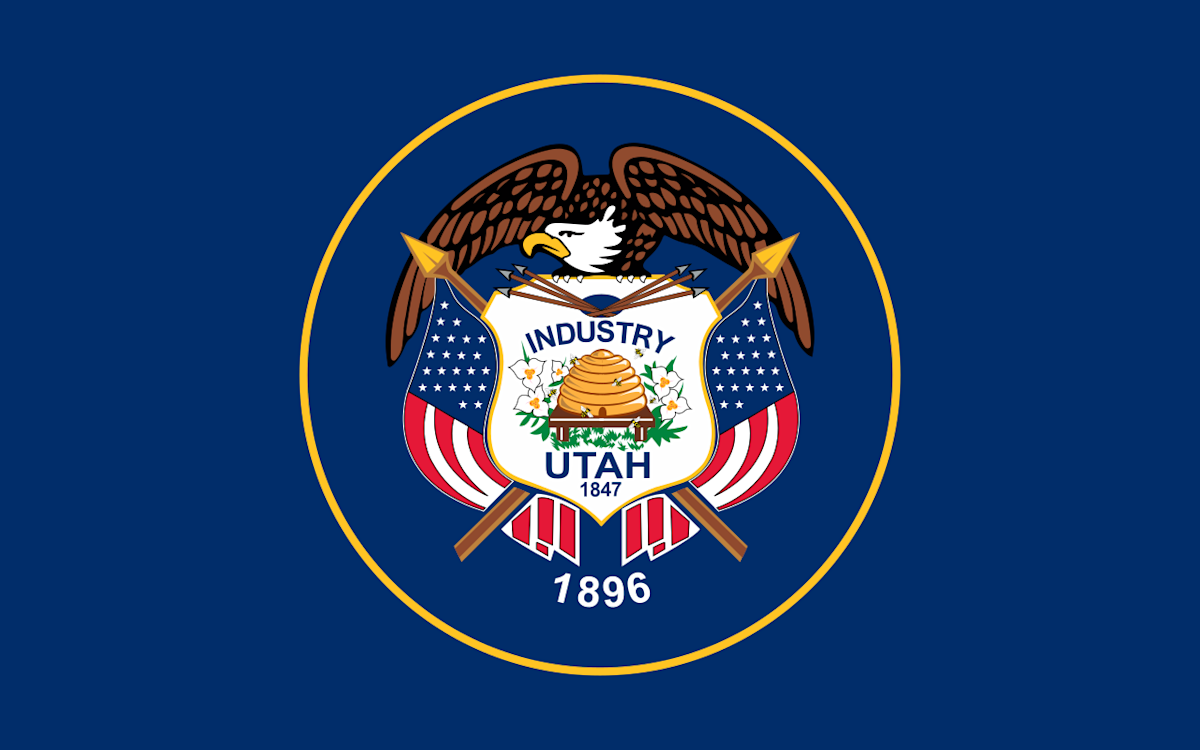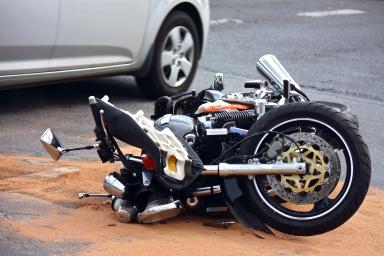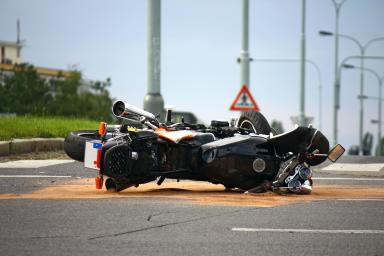Utah Motorcycle Laws

The Utah Department of Transportation and Department of Public Safety released preliminary traffic fatality data for 2022, which showed 320 deaths on Utah roads in the past year. Of these deaths, there were 50 motorcycle fatalities, compared to 40 in 2021.
UDOT and DPS encourage riders to go “Back to Basics” to achieve zero fatalities in the future and have implemented strategies to increase road safety. These include wearing reflective gear and lights, learning motorcycle filtering laws, and watching out for pedestrians and bicyclists.
Utah is known to have scenic roads, but some of them are deemed hazardous for riders. Motorcyclists must be mindful of the most dangerous roads, including Interstate 15, with its heavy traffic congestion and limited visibility due to large vehicles; Highway 6, due to its narrow lanes and high freeway speed; and Interstate 70, for its high peak elevation and snaking turns.
Utah’s laws for motorcycles aim to help riders prevent accidents with other road users. A full understanding of the laws presented below helps ensure the safety of everyone on the road.
Utah Motorcycle Driver’s License Requirements
To legally ride a motorcycle on Utah’s roads, individuals must be 16 or older with an existing driver’s license. They must apply for a motorcycle driver's license endorsement indicating they have met specific requirements to operate a motorcycle.
The application includes an eye test and requires drivers to complete a 25-question motorcycle written knowledge test. For the motorcycle driving skills test, riders can schedule a test with the Driver License Division or take a Motorcycle Safety Foundation Beginning Rider Course.
After the tests, drivers will complete the application online and be directed to schedule a duplicate appointment.
For the first two months with a motorcycle learner permit, the individual must operate with no passengers, not ride between 10:00 p.m. and 6:00 a.m., and not ride on highways with over 60 mph speed limits.
Utah Motorcycle Tiered Licensing
Utah follows a tiered motorcycle license system for its motorcycle endorsement based on the motorcycle's engine size used during the rider skills test.
Those who tested on a motorcycle or scooter over 650 cc will not be restricted and are authorized to ride any size motorcycle or scooter. Riders who tested on a motorcycle with 649 ccs or less are restricted to riding motorcycles and scooters with the same engine size or less than what they used on the rider's test.
Utah Rider Training Program
Utah riders can improve their skills through Rider Training Programs with basic and advanced courses.
Basic rider courses include classroom and range instruction, covering foundational topics like straight-line riding, shifting, stopping, riding strategy, and risk reduction. Completing this course waives the riding skills test for those applying for a motorcycle endorsement.
Riders with over 1,000 miles of riding experience can take the Experienced Rider course, which helps improve braking, cornering, and swerving skills. The Advanced Rider course includes five hours of training using the rider’s own motorcycle and covers basic motorcycle operation and crash avoidance skills.
Lastly, the Ultimate Bike Bonding course is a half-day class modeled after a police training course. It is focused on limited-space maneuvers and challenging exercises to help riders develop precise and smooth motorcycle control.
Utah Motorcycle Registration Law<
Every motorcycle in Utah must be titled and registered annually. This law also covers autocycles, scooters, and street-legal ATVs.
To receive a title, the motorcycle owner must fill out a Utah Title Application form and complete the Certificate of Inspection for the Vehicle Identification Number. They must also be present during the process.
To register a motorcycle, the owner must pay the registration and age-based uniform fees. A safety inspection certificate may also be required.
Registration exemptions include motorcycles owned and operated by non-residents and US government officials.
Utah Protective Headgear Law
Utah is a partial-law state when it comes to using motorcycle helmets or protective headgear. This law only requires riders aged 21 or under to wear helmets when operating on a highway or public street. Protective headgear must follow standards set by 49 C.F.R. 571.218.
However, the Utah Motorcycle Operator Manual suggests that riders wear a DOT-compliant helmet to protect them in any crash and prevent serious injury. Protective headgear must fit snugly and have no obvious defects like loose padding, cracks, or frayed straps.
In addition, eye and face protection using a plastic impact-resistant face shield is also suggested to protect the rider from dirt, dust, rain, and insects while on the road.
Utah Motorcycle Equipment Requirements
Utah motorcycles must be equipped with various equipment to be considered street-legal.
Motorcycles must have a braking system other than the parking brake. It must be able to stop the vehicle on a dry, smooth, hard surface within 40 feet from an initial speed of 20 mph.
The lighting requirements include one headlamp, one tail lamp, a tail lamp, or a separate light to illuminate the rear license plate, a stop lamp, and a red reflector on the rear.
Other requirements are a horn or warning device, a muffler and emission control system, a mirror, and solid rubber tires.
Violations of this section are considered infractions.
Utah Motorcycle DUI Law
Alcohol and drugs are major contributors to fatal motorcycle crashes, and Utah has enacted a DUI law to discourage riders from driving while under the influence of alcohol or drugs.
A rider found to be operating a motorcycle with a BAC of 0.05% is considered intoxicated and will be convicted of a DUI. Utah was the first to adopt the 0.05% concentration limit to improve road safety. Riders under the age of 21 with a BAC of 0.02% are considered intoxicated. A blood, urine, or breath test can be used to determine the BAC.
Violations of this law are considered a class B misdemeanor and may lead to fines, license suspension, an insurance rate increase, and community service. For example, a first offense costs $700 to $1,000 in fines, while a second offense within 10 years results in six months in prison and up to $1,000 in fines.
Those who violate the DUI law and inflict bodily injury on another person could be fined up to $2,500 for a first offense and can be imprisoned for up to one year.
Utah Implied Consent Law
Utah has established an implied consent law that states every driver is considered to have consented to a chemical test to determine if he is illegally operating a motor vehicle. These tests must be administered if a police officer believes the driver has been driving while visibly impaired.
Those who refuse to submit to testing will face an "on-the-stop" administrative suspension and, if convicted of a DUI in court, a court-ordered suspension.
Utah Motorcycle Lane Filtering Law
Utah has legalized lane filtering since May 2019, but only under certain circumstances. Riders can lane filter when on a roadway with a speed limit of 45 mph or less and divided into two or more adjacent traffic lanes in the same travel direction.
Other circumstances include when the motorcycle is traveling at 15 mph or less and when the vehicle being overtaken is stopped in the same lane. Lane filtering is also allowed if the action can be made safely.
More information on lane filtering can be found at ridetolive.utah.gov/lane-filtering.
Utah Motorcycle Insurance Requirements
Utah law requires motorists to have vehicle liability insurance and proof of insurance to register their motorcycles.
The minimum liability insurance requirements in Utah include $25,000 for bodily injury liability per person in any one accident, $65,000 for bodily injury liability for two or more persons in one accident, and $15,000 for property damage arising in any one accident.
Motorcyclists can also add roadside assistance, OEM endorsement, custom equipment, collision, or comprehensive insurance policies to enhance their coverage.
Uninsured motorcyclists involved in accidents must pay out-of-pocket for medical expenses and vehicle repairs.
How Much Can One Sue for a Motorcycle Accident in Utah
Victims of motorcycle accidents in Utah can sue the responsible parties for compensation for economic and non-economic damages incurred from the incident.
There are no specified caps on damages for personal injury claims in Utah, and the plaintiff can recover compensation for all damages sustained due to the accident. Economic damages include medical costs, lost wages, rehabilitation costs, and a loss in future earning capacity. On the other hand, non-economic damages include mental anguish, loss of enjoyment of activities, loss of consortium, and pain and suffering.
In addition, there are instances where the plaintiff can be awarded punitive damages. This is meant to punish at-fault parties if it is proven that their reckless or intentional conduct warrants punishment beyond compensatory damages. In cases where punitive damages are awarded, the first $50,000 will be in favor of the injured party, and any amount in excess will be divided equally between the injured party and the state.
You may consult with an experienced attorney to maximize recovery and understand the amount of restitution you are entitled to.
Utah Statute of Limitations for Motorcycle Accidents
The statute of limitations to file personal injury claims for motorcycle accidents in Utah is four years, starting on the day of the accident. Claims for personal property damage involving a motor vehicle also have the same time limit.
For wrongful death claims, the surviving family has two years from the date of death to file a lawsuit. However, claims against the government for both personal injury and wrongful death only have a one-year statute of limitations.
Motorcycle accident victims in Utah need to understand these limitations and act promptly if they seek to pursue legal action.
Utah Is a No-Fault State for Insurance Claims
Utah follows the no-fault rule for insurance claims involving motorcycle accidents. A person involved in a motorcycle accident can file claims from their auto insurance policy which can cover all injury-related expenses. It is expected to deliver fast financial assistance to accident victims and reduce the need for legal battles for compensation.
The state requires at least $3,000 in no-fault coverage, which is also called personal injury protection or PIP. This covers medical and surgical expenses, rehabilitation costs, ambulance services, and hospital and nursing services. The no-fault insurance does not cover compensation for non-economic damages.
When the injuries are serious and cannot be covered by PIP, injured parties can file a suit against the at-fault motorists for injuries and damages beyond what their own insurance policy can cover.
Utah Is a Modified Comparative Negligence State for Motorcycle Accident Lawsuits
Utah is a modified comparative negligence state with a 50% at-fault bar. Individuals found to be 50% at fault for the motorcycle accident will be barred from recovering any compensation.
If the plaintiff is found to be 49% or less at fault, they can receive compensation, but the amount awarded will be reduced by their degree of fault. For example, a plaintiff awarded $100,000 but found 20% to be at fault would receive $80,000 in compensation.
An experienced personal injury attorney can help with the legal process and help injured victims receive the compensation they deserve.
Legal Resources for Utah Motorcycle Accident Victims
Utah Bar Association Lawyer Referral Program
The Utah Bar Association Lawyer Referral Program helps connect motorcycle accident victims seeking legal guidance and support to experienced attorneys specializing in motorcycle accident cases. It offers directories of lawyers, guides on navigating the legal process, and educational materials to help victims understand their rights.
Utah Legal Help
The Utah State Bar is a sponsor of Utah Legal Aid. It assists motorcycle accident victims in accessing the legal help they need. It provides a directory of pro bono, reduced-cost, and private lawyers. It has do-it-yourself resources for self-represented parties, like fill-in-the-blank forms with detailed instructions.
Utah State Courts Self-Help Resources
Utah State Courts offer a wide range of self-help resources for parties who want to represent themselves in a lawsuit. It provides access to the Online Court Assistance Program document preparation site and the MyCase online system to view and file documents for different cases. It has articles, instructional videos, and downloadable resources for motorcycle accident victims who need assistance with filing a claim, understanding court procedures, or accessing legal forms.
Utah Crash Reports Resource
The Utah Crash Reports Resource by the DPS provides a copy of accident reports for those involved in motorcycle crashes. It also offers an FAQ section that guides victims through the process of obtaining crash reports, understanding the information contained within them, and navigating any associated legal procedures. Involved parties can order the report online. Only the following individuals can order accident reports: the people involved in the accident, an injured victim, a parent or legal guardian, a licensed private investigator, public law enforcement officers, local, state, and federal agencies, and the news media.
Utah Motorcycle Operator Manual
The Utah Motorcycle Operator Manual serves as an essential guide for new and experienced motorcycle riders with information on the rules, regulations, and safety guidelines for motorcycles. It includes details on motorcycle operations, licensing requirements, traffic laws, and other specific requirements in the state. Motorcycle accident victims can use this manual to understand their legal rights.
Utah Traveler Information
The Utah Traveler Information shows real-time travel information for locals and travelers, including current conditions for construction, crashes, congestion, and weather. It also provides access to the state’s network of cameras. It offers links to view seasonal roads, rest areas, wildfire information, and express/HOV lanes. Being aware of potential risks and planning routes accordingly can significantly reduce the chances of motorcycle accidents and enhance overall road safety.
Expertise.com StaffAuthor
Step into the world of Expertise.com, your go-to hub for credible insights. We don't take accuracy lightly around here. Our squad of expert reviewers, each a maestro in their field, has given the green light to every single article you'll find. From rigorous fact-checking to meticulous evaluations of service providers, we've got it all covered. So feel free to dive in and explore. The information you'll uncover has been stamped with the seal of approval by our top-notch experts.


![¿Cuál es la indemnización promedio de las demandas por accidentes de moto? [2023]](https://images.ctfassets.net/k00sbju4hbzq/590XSDSoqNVs6XSMNY5s3G/a969ee3bedaaf9016cec601fc30f495b/average_motorcycle_accident_settlement.jpg?fit=fill&w=384&q=75)

